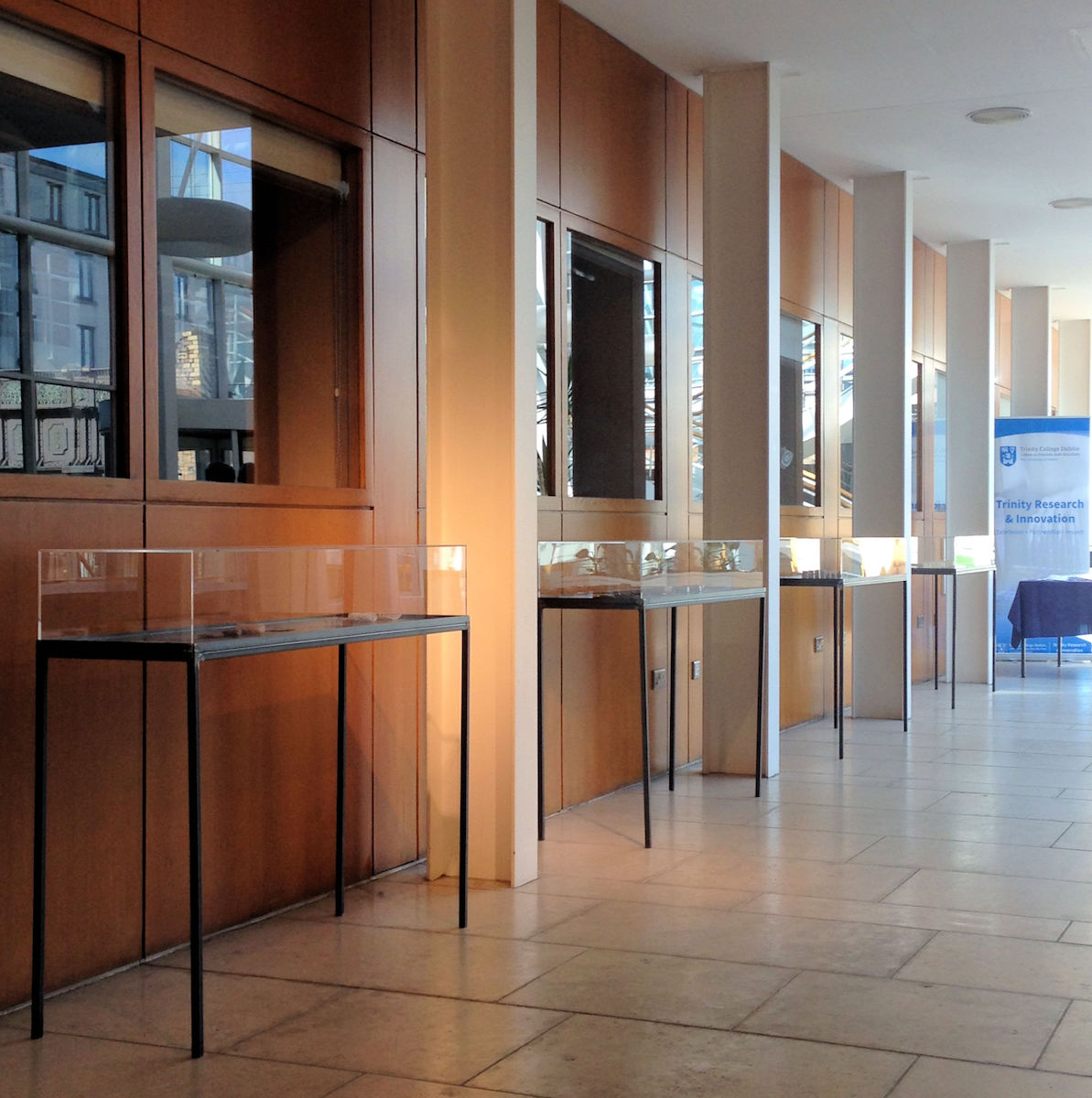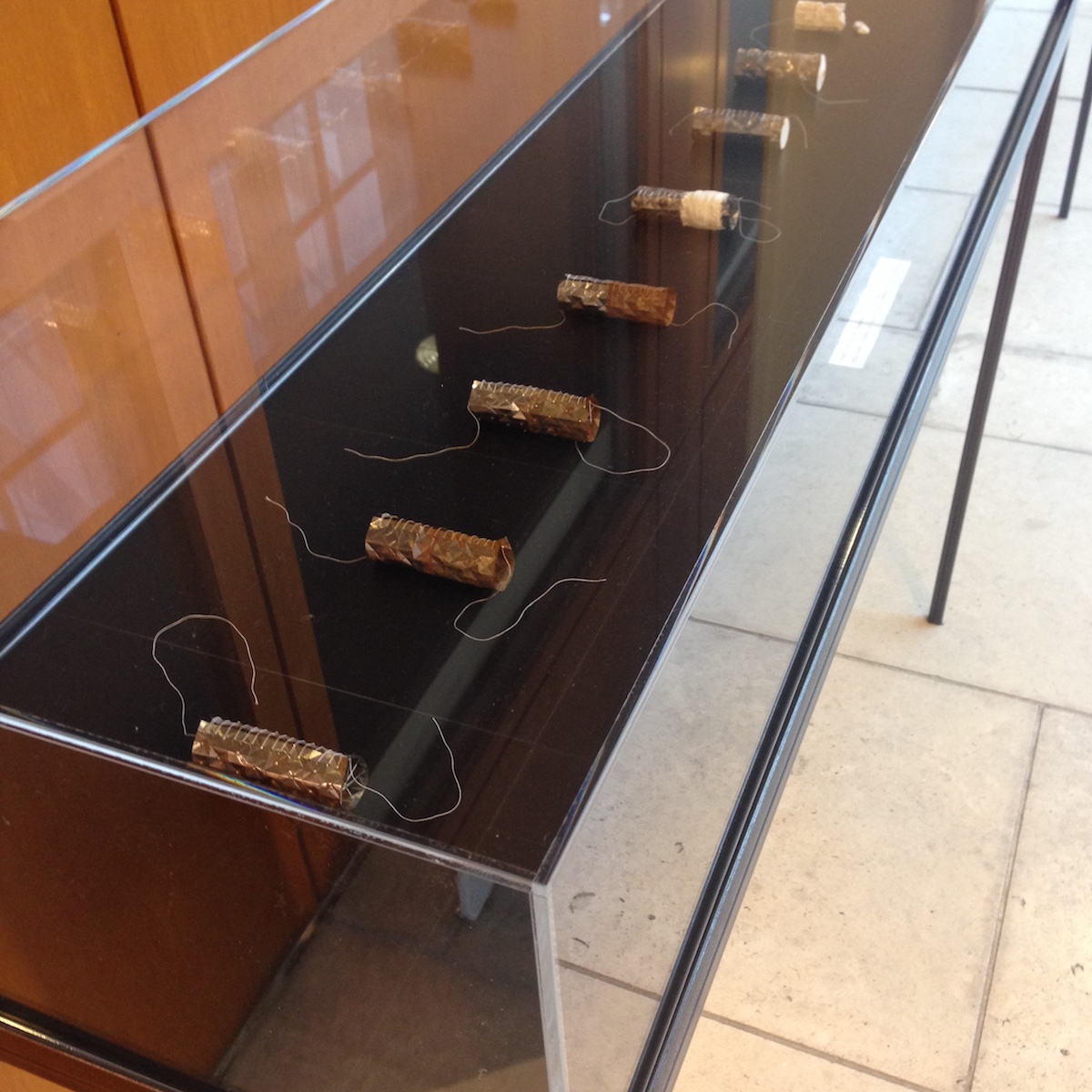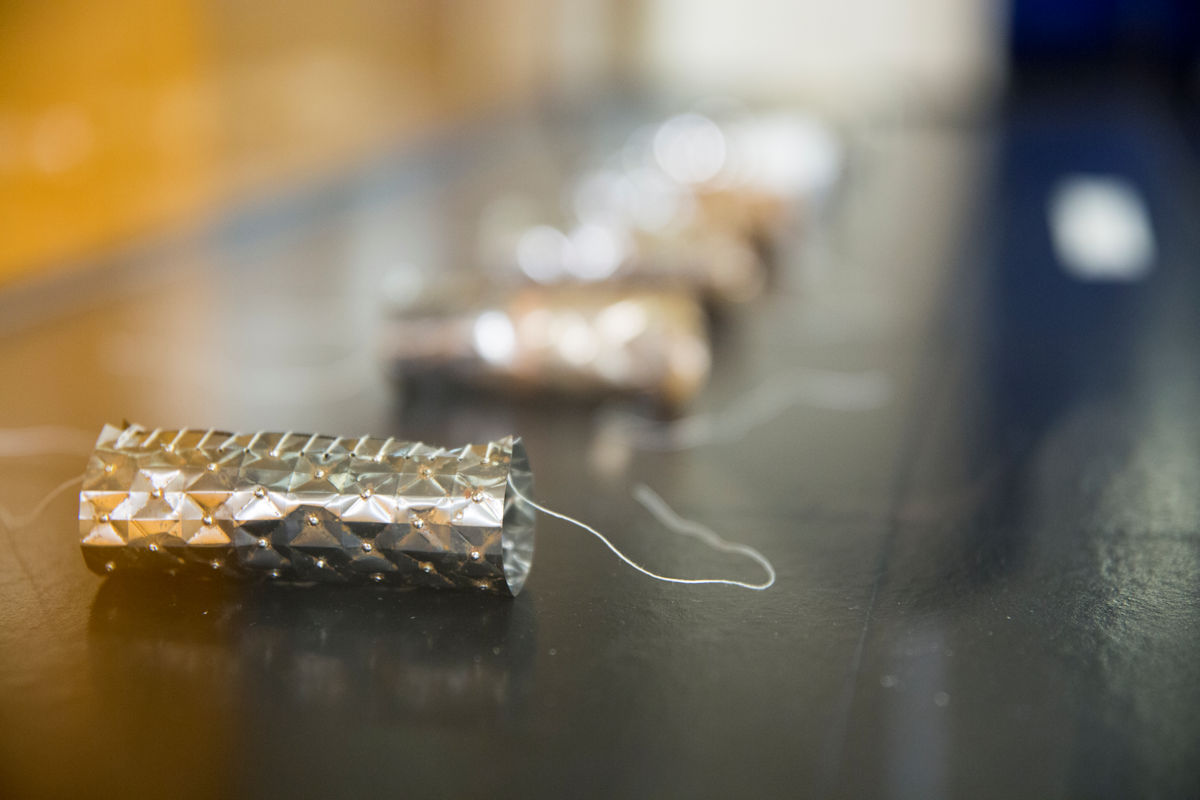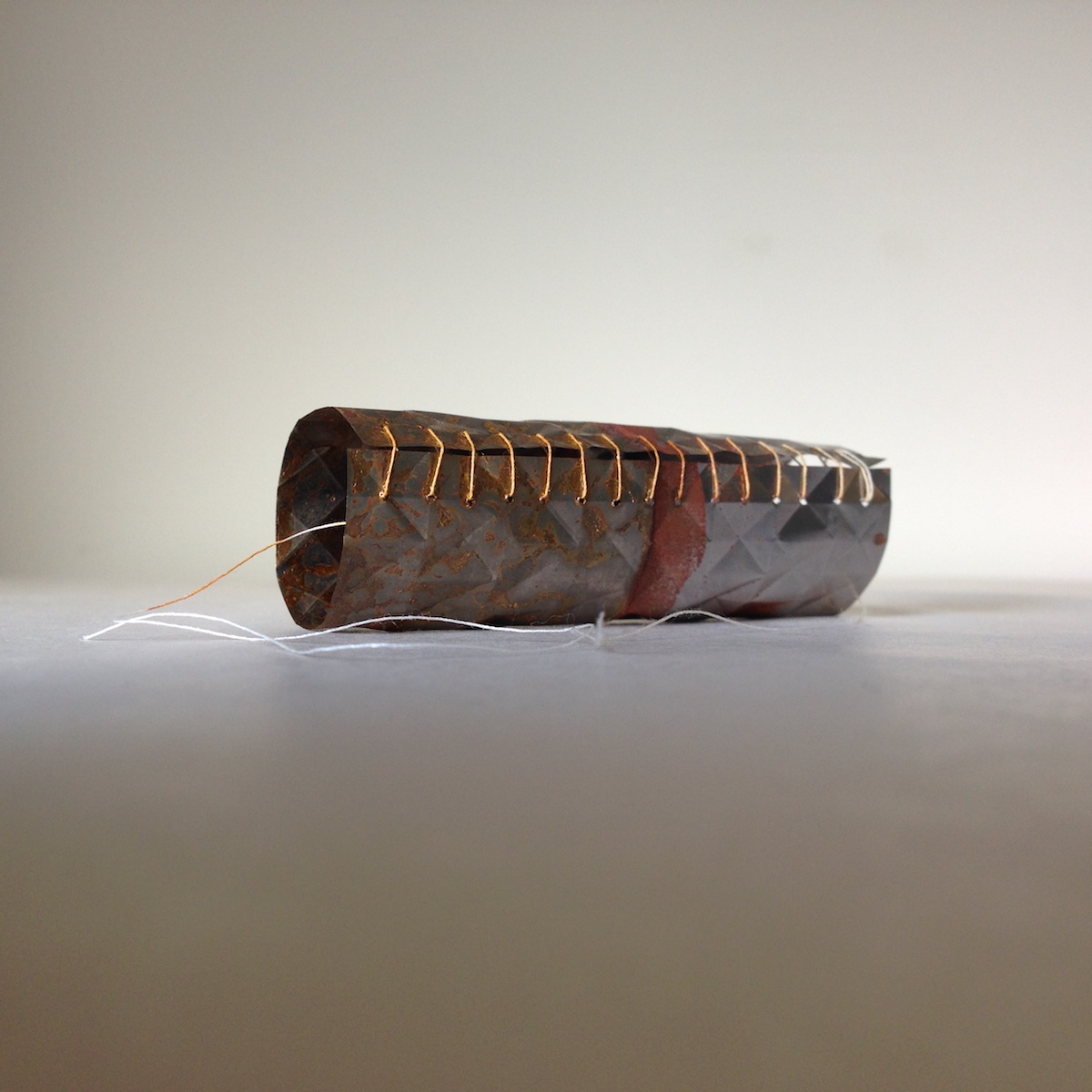Judy Foley, Foreign Body at O’Reilly Institute, Trinity College Dublin.
Prose and poetry – all art, music, dance – rise from and move with the profound rhythms of our body, our being, and the body and being of the world.
– Ursula LeGuin*
When faced with a display where everything is well-ordered and precise, the last thing that I expect is to be emotionally or existentially challenged. Yet this is exactly what happened at Judy Foley’s exhibition, Foreign Body, in the foyer of Trinity College’s O’Reilly Institute.
It is a brightly lit, glassy space, and Foley’s work is contained in four bespoke display cases, set back in alcoves of the foyer in such a manner that one individually examines each display containing a related group of sculptures. The subtitle of the exhibition, as can be read on the invitation, is “medical implant as handcrafted object” and this provides an important key to the work. Heart valves and stents are medical life-saving implants. The sculptures are made to size in the likeness of these devices with felt, beeswax, thread, plaster, mild steel or a combination of these materials.
Each group of sculptures is placed on indigo carbon paper forming the base of the display cases – the delicate paper a subtle nod to humanity as a carbon-based life form. The use of carbon also shows a shrewd, albeit quiet, wit in its sidelong reference to the historic use of carbon paper in copying, especially when considering an exhibition of work that is dealing with replication, yet transforms this idea to create something beyond replication! The sculptures include meticulous hand stitching and the form of stitching is meaningful: while a blanket stitch is used for durable mending, a running whip stitch may be used in sutures on the dead, for instance as used by a medical practitioner for speedy closing during an autopsy.
The exhibition is curated by Anne Mullee and there is an insightful accompanying handout that takes the form of a question-and-answer session between Mullee and Foley; they discuss the importance of handcraft and a number of post-human issues relevant to prosthetic implants.
There are several works in the exhibition that specifically give me a sense of foreboding and, in fact, dread. Some pieces are ominous in their use of straight pins perforating the vertices of a stent’s origami structure, visually creating a sharp blockage of a space where one imagines a healthy blood flow. There is a plaster piece – the marks of a stent structure impressed clearly on its surface – that is visibly deteriorating, and yet another stent piece, made of metal, is rustily decomposing.
Foreign Body is more than meets the eye. Judy Foley’s work is unassuming in size and structure; it requires quiet contemplation. The museum-like display facilitates the demands of the work and commands a focus from the viewer that is fully and amply rewarded both aesthetically and psychologically.






